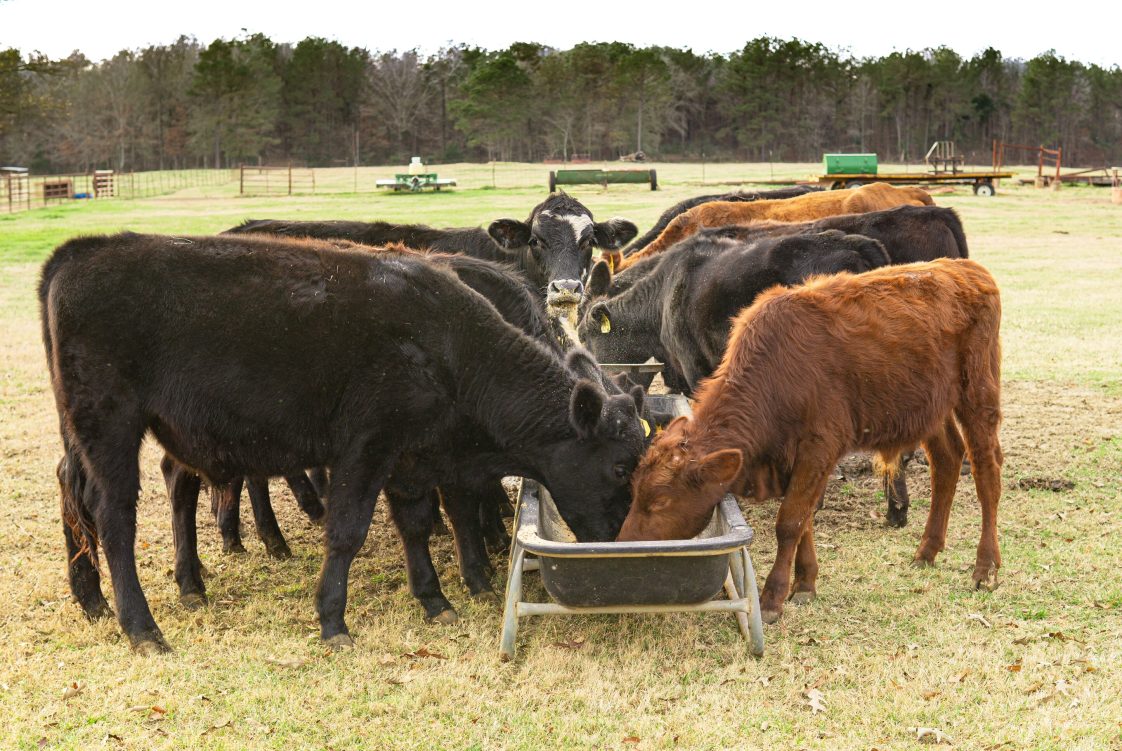Beef

A feed tag is an important tool that can be used to evaluate the general nutritional value of a feed supplement. Feed supplements are used to provide additional nutrients in beef cattle diets.
Basic Requirements for a Feed Tag
The Association of American Feed Control Officials (AAFCO) defines the standards for feed tag labels. Feed tags are required to include the following components:
- Net weight of the product.
- Product and/or brand name.
- A guaranteed analysis of certain ingredients, which states the level of inclusion guaranteed by the company.
- The common name of each ingredient. Collective terms can also be used for ingredients of similar type (e.g., corn-based ingredients).
- The name and mailing address of the manufacturer or seller.
- Directions for product use.
- Precautionary statements for safe use.
If the feed includes a medication, there is additional information included on the label that describes the medication ingredients, purpose of the medication, directions for use, and precautionary statements regarding warnings against misuse and any withdrawal period when required by law. For feeds where medication is included, the word MEDICATED usually appears on the tag directly below the title or name of the feed.
Breaking Down Feed Quality Components
Feed components are listed on a dry matter basis (DM) on the feed tag. The following are listed as part of the guaranteed analysis:
Crude fat – Crude fat is expressed as a percentage on the feed tag. Fat is considered an energy source in cattle diets but is usually used in limited amounts in beef-cattle supplements. Each percentage point of fat represents 2.25 percentage points of total digestible nutrients (TDN).
Crude fiber – Crude fiber is expressed as a percentage on the feed tag. The crude fiber value is a rough estimate of energy level. If crude fiber is less than 8 percent, this generally represents a higher amount of grains or starchy feeds in the feed mix. A crude fiber value greater than 12 percent is an indicator that more fiber-based feeds are included in the feed mix. In some cases, neutral detergent fiber (NDF) and acid detergent fiber (ADF) will be reported as a measure of fiber value. As neutral and acid detergent fiber increases, energy value decreases.
Vitamins – Vitamins are expressed in International Units (I.U.). Feed tags include information on vitamins A, D, and E. Vitamins K and B are not added to feed supplements because they are synthesized by microbes in the rumen of beef cattle.
Minerals – Minerals in feed supplements are reported as macrominerals or microminerals. Microminerals are sometimes referred to as trace minerals. Macrominerals are reported as a percentage on the feed tag. Microminerals are reported as parts per million (ppm). A minimum (min) or maximum (max) amount of each mineral included in the feed is listed. Common macrominerals are calcium, phosphorus, sodium (salt), and magnesium. Trace minerals are copper, zinc, selenium, cobalt, iodine, and manganese.
Feed Tag Nuances
In commercial feeds, the inclusion rate of individual feed ingredients is not usually listed. The specific formulation is not always described, either for proprietary reasons or to allow flexibility for the company to alter the specific inclusion rate of ingredients based on feed availability. The company may use generalized terms for feed ingredients instead (see below).
Generalized terms for feed ingredients. Sometimes a collective term is used to describe a category of feed ingredients used. This allows for feed ingredients to be interchanged based on factors such as price and availability. For example, a tag may list corn-based byproducts or plant protein products, which would allow the company to substitute ingredients that fall under this category.
Total digestible nutrients is not listed on the tag. Energy values are calculated estimates, so they cannot be listed as guaranteed on the feed tag. Because TDN is usually used conversationally to describe energy value to farmers, you can still use some of the guaranteed analyses on the tag as a way to estimate this calculation.
Estimating TDN of Commercial Feeds
Total digestible nutrients is an estimate of energy value of a forage or feed. While TDN is not usually included on a feed tag, a rough estimate of TDN can be calculated from some of the components listed.
TDN % (DM basis) = 87.84 – (ADF % × 0.70)
If ADF is not listed, the following can provide a rough target TDN value to work from in discussion with producers:
TDN % (DM basis) = [80 – Crude Fiber (%)] + [Crude Fat (%) × 2.25]
A more accurate estimate of TDN can be determined by conducting a feed analysis, but this requires adequate time for sample processing prior to feed purchase. In most cases, this becomes a retroactive way to determine quality and feed supplementation rate for the farmer.
Examples Using These Calculations
A feed tag lists the feed as 35% ADF. Based on these values, the TDN can be estimated as the follows:
TDN % (DM basis) = 87.84 – (ADF % × 0.70)
= 87.84 – (35 × 0.70)
= 87.84 – (24.5)
= 63%
A feed tag lists the feed as 10% crude fiber and 3% crude fat. Based on these values, the TDN can be estimated as follows:
TDN % (DM basis) = [80 – 10] + [3 × 2.25]
= 70 + 6.75%
= 77%

